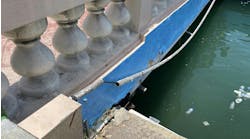Articles 501, 502, and 503 of the National Electrical Code (NEC) provide the requirements for Class I, Class II, Class III locations, respectively. The Location is further identified as Division 1 (combustibles present under normal conditions) or Division 2 (combustibles present only during abnormal conditions).
The Zone system is an alternative to the Division system for Class I and II locations (Art. 505) and Class III locations (Art. 506). While the Division system has two divisions, the Zone system has three zones (0, 1, and 2 for gases or liquids; 20, 21, 22 for fibers/flyings).
The Zone system accounts for the properties of the flammable or combustible materials [Sec. 505.5(A) and Sec. 506.1(A)] and the method(s) of protection. This “customized” approach can provide an advantage for both safety and cost.
Depending upon the installation, to correctly apply the Zone system you may need to use the several standards listed in the Informational Notes identified in the first few Sections of Articles 505 or 506.
If you are new to the Zone system, know the applicable protection methods. Also, spend some time becoming familiar with the definitions before diving into the requirements.




